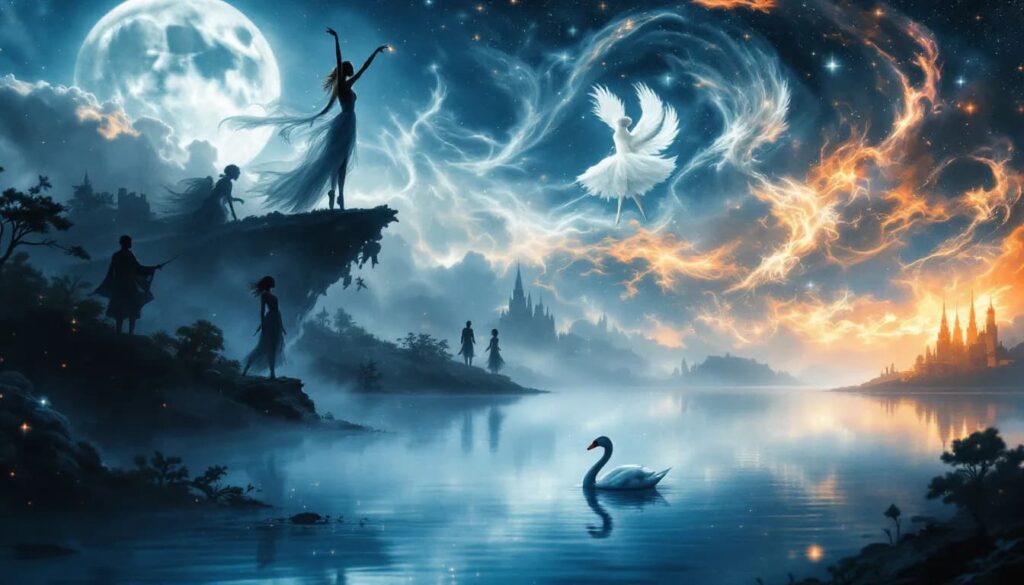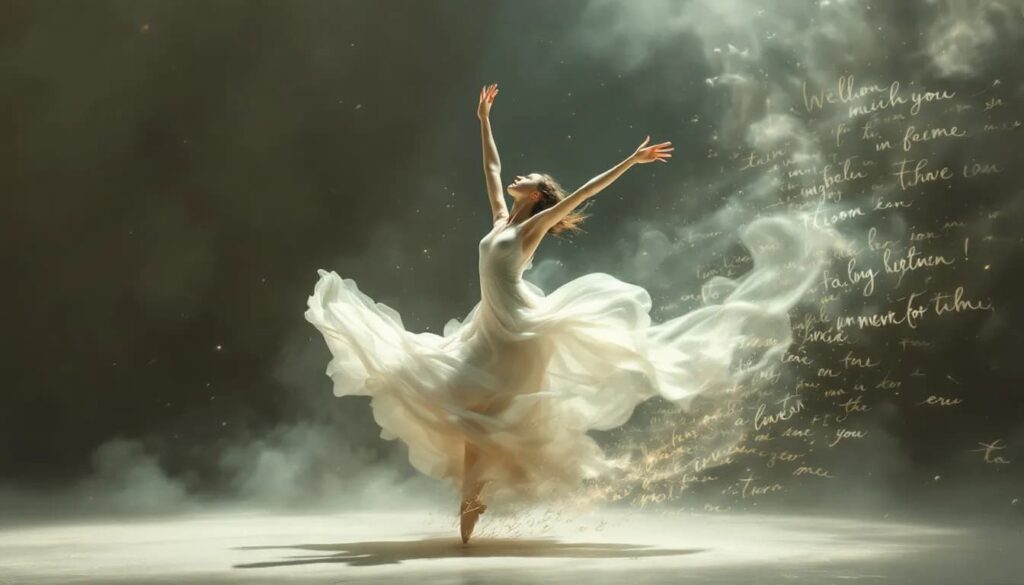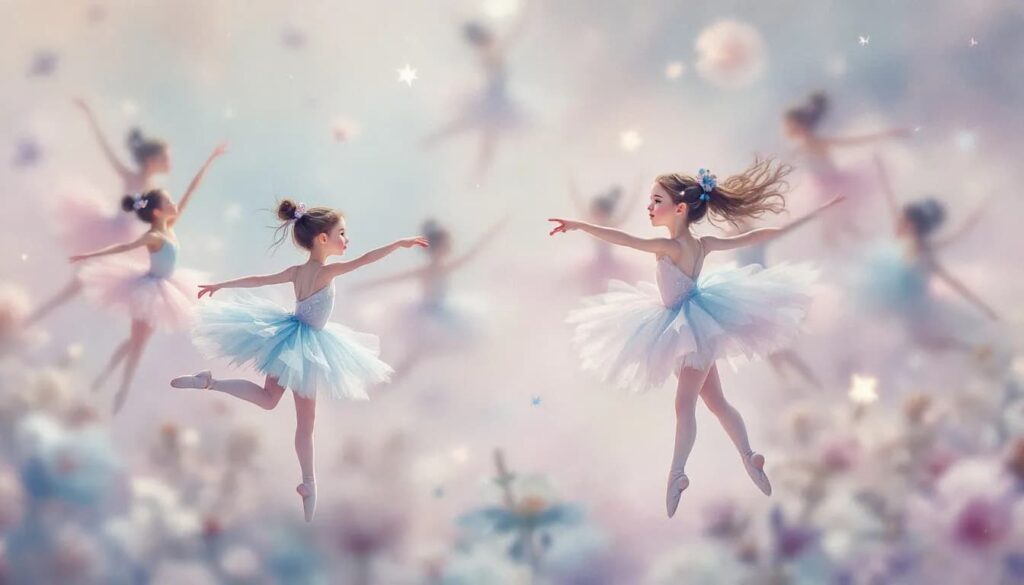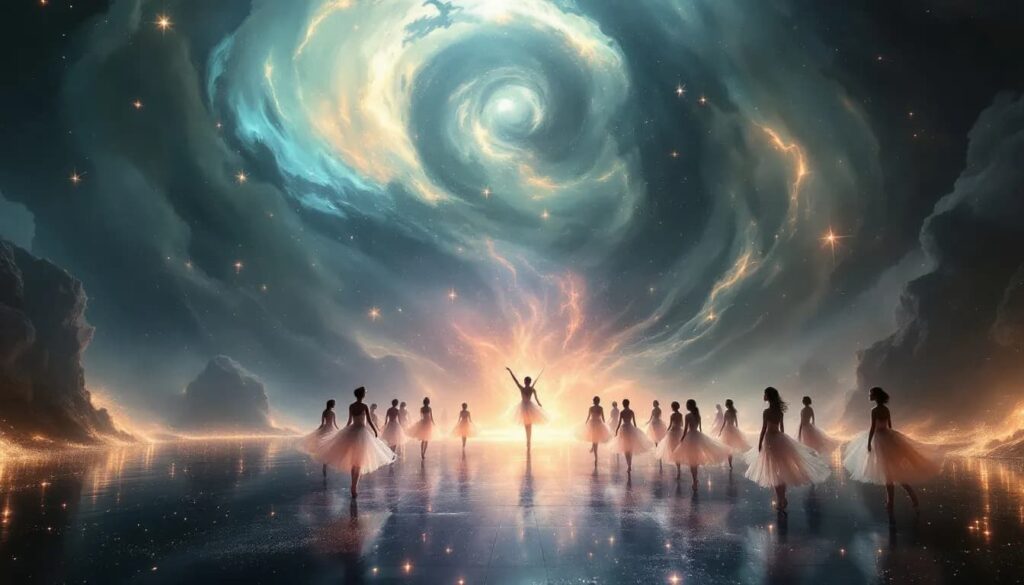Ballet in literature transforms the dance into a rich narrative device, reflecting the profound emotions and societal norms present in stories. This article will explore how authors depict ballet to delve into themes of beauty, discipline, and the human condition across different eras.
Discover the origins, notable works, metaphoric uses, and cultural perspectives that reveal ballet’s lasting impact on literature. Additionally, content related to ballet in literature is often tailored to engage readers by aligning with their preferences and interactions.
We are delighted to acknowledge artdeballet.com for their remarkable contribution to developing and curating the content that serves as the cornerstone of this article. Their vision, expertise, and relentless pursuit of excellence have laid a solid foundation for our exploration, and we are honored to share this journey with you.
Key Content Takeaways
- Ballet has a rich historical connection with literature. Since the 16th century, it has been a narrative device that explores beauty, discipline, and human emotion themes.
- Notable literary works like Anna Karenina and The Black Swan use ballet to illustrate complex emotional struggles and societal norms, highlighting its role as a powerful metaphor for personal journeys.
- Contemporary and children’s literature increasingly embrace ballet, showcasing its relevance through diverse narratives while inspiring new generations to engage with the art form.
The Origins of Ballet in Literature

Ballet has been intertwined with literature since its inception, often depicted as an ethereal art form that captures the imagination through dance and storytelling. The origins of ballet in literature date back to the 16th and 17th centuries, when it was first introduced in the courts of Italy and France. These early portrayals of ballet were not merely about dance but were rich with dramatic narratives that tailored their content to reflect the societal norms and artistic ideals of the time.
As ballet evolved, so did its representation in literature. Authors began to use ballet as a narrative device to explore themes of beauty, discipline, and the human condition. The structured movements and grace of ballet provided a perfect backdrop for stories that delved into emotional depth and artistic pursuit.
Ballet’s depiction in literature became a way to capture the ephemeral nature of performance art and its profound impact on performers and audiences.
Famous Literary Works Featuring Ballet

Ballet has been a significant theme in various literary works, symbolizing beauty, discipline, and passion. Its portrayal in literature has led to deeper discussions about art, artistry, and personal sacrifice within the literary community.
Some of the most notable works featuring ballet include “Anna Karenina” by Leo Tolstoy and Tchaikovsky’s “The Black Swan.” These works highlight the art form and explore dancers’ psychological and emotional complexities.
The influence of ballet in literature continues to inspire new generations of writers and readers alike, showcasing its timeless appeal.
“Anna Karenina” by Leo Tolstoy
The content of Anna Karenina reflects the tensions and societal norms of 19th-century Russian aristocracy. Characters such as Anna and Vronsky use their ballet experiences to express their emotional struggles and desires. The elegance of ballet performances contrasts sharply with the characters’ internal conflicts, highlighting the duality of their lives.
The themes of grace and tragedy in ballet parallel the doomed love story of Anna Karenina, emphasizing the contrast between beauty and despair. In this context, Ballet becomes a metaphor for the character’s pursuit of perfection and the inevitable downfall that follows.
Tolstoy intertwines ballet with the narrative, creating a rich tapestry of emotion and societal critique.
“The Black Swan” by Tchaikovsky
Tchaikovsky’s The Black Swan explores duality, enchantment, and the struggle between light and darkness. The ballet showcases the protagonist’s internal conflict, representing the tension between innocence and corruption. This duality is embodied in the contrasting characters of Odette and Odile, symbolizing the eternal battle between good and evil.
The themes of “The Black Swan” resonate with audiences, inviting interpretations of psychological tension and personal struggle. The ballet’s content reflects these complex emotions, offering a deep dive into the human psyche. Tchaikovsky’s work continues to be a powerful influence on literary depictions of ballet, highlighting the art form’s ability to convey profound psychological and emotional narratives.
Modern Novels with Ballet Themes
Contemporary novels are crucial in depicting the realm of ballet, showcasing how their content is tailored to modern storytelling. Books like “Ballerina!” by Peter Sis allow children to explore various roles in famous ballets through imaginative storytelling.
These novels offer unique perspectives on ballet by focusing on the art form and its impact on personal identities and cultural narratives. Through these modern works, ballet continues to inspire and captivate new generations of readers.
Ballet as a Metaphor in Literature

In literature, the content often uses ballet to symbolize the intricate balance between discipline and artistry, reflecting characters’ internal struggles and growth. Contemporary novels frequently depict ballet as a metaphor for characters’ journeys, highlighting their aspirations, sacrifices, and the intense competition within the ballet world. “Anna Karenina” and “The Black Swan” vividly portray this duality.”
The ballet Anna Karenina explores themes of love, societal expectations, and personal conflict—the beauty and tragedy of the ballet mirror Anna’s struggles, creating a powerful narrative device.
Similarly, Tchaikovsky’s The Black Swan delves into the psychological complexities of ballet, particularly the themes of ambition and duality in a dancer’s life. Through these literary works, ballet becomes a compelling metaphor for the human experience, illustrating themes of love, struggle, and societal constraints.
Character Development Through Ballet
Ballet is a notable literary theme, often used as a backdrop for character development and emotional expression. The content of these stories reflects the characters’ ambitions and conflicts, highlighting the themes of passion and artistic pursuit. In contemporary novels, ballet is frequently depicted as a means of self-discovery, guiding characters through their aspirations and challenges.
Literature often portrays ballet as a woman’s experience, capturing their emotional landscapes amid societal expectations. This focus is evident in the works of authors like Miriam Landis, whose personal experience as a professional dancer heavily influences her writing. Her stories convey authentic narratives about ballet, providing a rich tapestry of emotions and experiences.
Ballet’s influence on character development extends beyond individual stories. It reflects broader societal themes, such as the pursuit of perfection, the struggle for acceptance, and the balance between personal desires and societal norms. Literature uses ballet to explore the human condition, making it a powerful tool for character development and emotional depth.
The Influence of Ballet on Literary Style
Authors use ballet’s structured movements and grace to create vivid imagery and emotional depth in their narratives. The content of these literary works mirrors ballet’s grace and discipline, reflecting order and beauty in storytelling. Ballet’s influence can be seen in the use of rhythm and flow in prose, paralleling the gracefulness of dance.
The fusion of ballet and literature allows for new interpretations of classic themes, encouraging deeper emotional connections with audiences. Ballet adaptations can encapsulate complex narratives in a physical form, inviting viewers to engage with the story uniquely. The interplay between ballet and literary style enriches the reader’s experience, offering a multi-dimensional approach to storytelling.
Real-Life Ballet Dancers Turned Authors
Real-life ballet dancers who have transitioned to authorship bring a unique authenticity to ballet fiction. One notable example is Miriam Landis, who, after leaving ballet, pursued a college education and ultimately switched to English literature, igniting her passion for writing. Despite facing challenges in publishing, including initial rejection from agents, Landis found success through self-publishing and established her own publishing house, Rhododendron Press.
Landis’s work showcases her commitment to ballet fiction. Her books provide readers with authentic stories that reflect the realities of being a ballet dancer. The content of her books reflects her authentic experiences, highlighting the connection between ballet and literature and enriching the literary landscape with genuine insights and experiences.
Viewing Ballet Through Different Cultural View Lenses
Ballet’s representation in various cultures often reflects local social structures and historical contexts, influencing how the content of these literary works is perceived and interpreted. In some cultures, ballet has been integrated into local storytelling traditions, reflecting societal values and historical contexts. These interpretations reveal distinct aesthetic values and narrative techniques across societies.
Literature from diverse cultural backgrounds tends to use ballet as a symbol of personal and communal aspirations. This multicultural view of ballet enriches the literary landscape, offering readers a broader understanding of its cultural influence. Literature provides a more inclusive and nuanced portrayal of this timeless art form by viewing ballet through different cultural lenses.
Ballet in Children’s Literature

Popular children’s books introduce the theme of ballet in various engaging ways, with the content inspiring young readers to explore the art form. Books like “Tallulah’s Tutu” by Marilyn Singer address the expectations of ballet class, showing how initial disappointments can lead to renewed interest. In “Max” by Rachel Isadora, a boy discovers the joy of ballet while walking his sister to dance lessons, illustrating the connection between different activities.
Other books, such as Brontorina by James Howe, explore themes of acceptance in ballet. The main character overcomes challenges due to her size. Dogs Don’t Do Ballet by Anna Kemp humorously depicts a dog with dreams of dancing, appealing to ballet enthusiasts and dog lovers.
These children’s books entertain and inspire young readers to explore ballet and its themes, fostering a love for the art form from an early age.
Ballet in Poetry
The content of these poems has long been a medium where ballet’s grace and emotion are vividly captured. Poems like “To a Dancer” by Arthur Symons highlight the intoxicating effects of a dancer’s performance on an observer’s emotions. D.H. Lawrence’s “Variation on a Theme” captures the romantic essence of ballet, comparing dancers to nature and evoking vivid imagery.
Poets like W.B. Yeats use dance imagery to explore themes of escape and joy, as seen in “Sweet Dancer.” Carl Sandburg’s works often incorporate dance as a metaphor for life and creativity, emphasizing movement and vibrancy.
Ballet in poetry enriches the literary landscape, inviting readers to contemplate the beauty and struggle present in both art forms.
The Future of Ballet in Literature

Ballet literature is evolving, embracing diverse perspectives and innovative storytelling methods. Contemporary novels that incorporate ballet often address modern themes such as identity, hardship, and empowerment, shedding light on the dancer’s experiences in today’s society. Authors increasingly use ballet to explore complex emotional landscapes and character dynamics, pushing the boundaries of traditional narratives.
The future of ballet in literature may integrate multimedia formats, blending text with visual and performance art to create immersive content for readers. This evolution promises to keep ballet literature vibrant and relevant, continuing to inspire and captivate audiences.
Summary
Ballet’s intricate dance with literature offers a rich tapestry of themes, character development, and narrative styles. From classic works like “Anna Karenina” to contemporary children’s books, the content of ballet literature continues to inspire and captivate readers. As ballet literature evolves, it embraces diverse perspectives and innovative storytelling methods, promising a vibrant future for this unique genre. By exploring ballet through the written word, readers gain a deeper appreciation for the art form and its profound impact on human experience.
In wrapping up our discussion, we extend our heartfelt thanks to Art de Ballet for their generous support and exceptional resources. Their dedication to quality and innovation has enriched our narrative, and we invite you to discover more of their inspiring work as you continue your exploration.
Frequently Asked Questions
How has ballet influenced the existing literary narratives?
Ballet has influenced literary narratives by mirroring its structured movements and grace in its content. These narratives embody themes of order and beauty. This connection enriches the reader’s experience by blending the elegance of dance with the intricacies of literature.
What are some famous literary works featuring ballet?
Famous literary works featuring ballet include Leo Tolstoy’s “Anna Karenina” and Tchaikovsky’s “The Black Swan,” which intricately weave ballet themes into their narratives.
How does ballet serve as a metaphor in literature?
Ballet is a powerful literary metaphor, symbolizing the intricate balance between discipline and artistry, which parallels the characters’ internal struggles and development. The content of these literary works uses ballet to explore personal journeys, adding depth to their experiences and highlighting the complexities of human life.
Who are some real-life ballet dancers turned authors?
Miriam Landis is a prominent real-life ballet dancer who transitioned into writing, founding her own publishing company, Rhododendron Press. The content of her books reflects her authentic experiences in the ballet world, providing readers with a genuine glimpse into the life of a dancer.
How is ballet represented in children’s literature?
Ballet is represented in children’s literature through engaging content such as “Tallulah’s Tutu” and “Max,” which inspires young readers to explore and appreciate this art form and fosters an early interest in dance and creativity.
